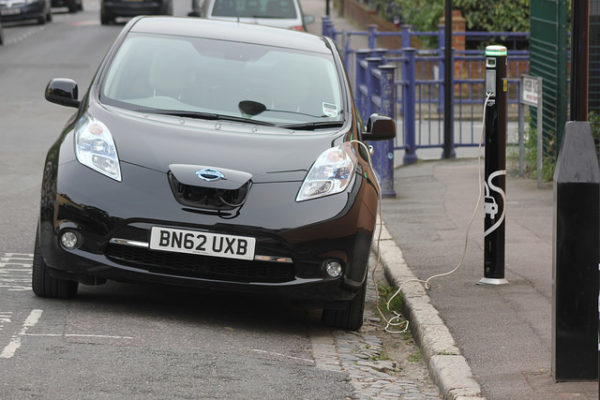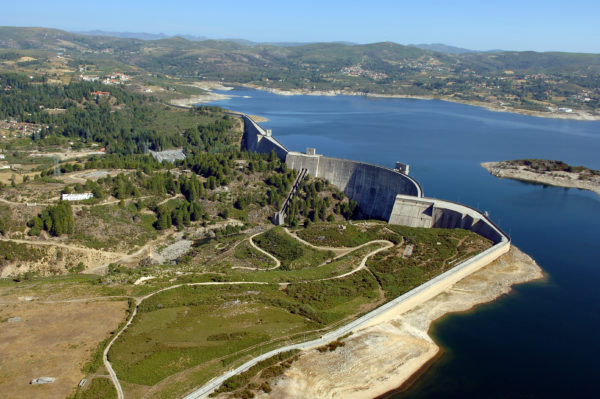If a “company changes the estimated probabilities and adjusted the accrued contingent consideration balance to $0 for the remaining milestones” and nobody is around to see it, does it make any noise?
The answer to that riddle is “some”. Buried in Tesla’s annual report this week was final confirmation from the normally brash technology firm that it would, in fact, be scrapping its partnership with Silevo, preferring instead to work with Panasonic on delivering its own heterojunction intrinsic Thin Film (HJT) technology.
That such an arcane sentence would pour forth from a multinational corporation is not surprising. That it came from Tesla – leading protagonists in the pithy world of PR-by-Twitter – is a little more surprising, but then again, Tesla does gravitas as solemnly as the rest the industry; we’re just still surprised when it happens.
Less surprised, however, was pv magazine that Silevo’s technology was getting hooked. Ever since Tesla announced its partnership with Panasonic, the shoe didn’t fit – why would Panasonic manufacture another company’s technology that competed directly with its own?

Batter up
Far more in keeping with the Tesla we have come to know was this week’s launch of its Powerwall 2 home battery solution into the Australian market. Boasting one of the highest penetrations of rooftop solar PV globally, Australia was always an obvious launching-off point for the Powerwall 2, with the firm’s Lyndon Rive remarking that he expects 100% of homes with rooftop solar installed to also have battery storage within the next decade.
The uptake of the Tesla Powerwall 2, he said, would stand on the product’s merits, which include it being a 30% smaller, sleeker unit – the new design also means the units can be stacked – with double the energy storage capacity at nearly half the cost per kilowatt hour of its predecessor, at AU$8,000 ($6,000) per 14 kWh battery pack, with installation and supporting hardware starting at $2,000.
“Tesla’s approach is simply to make the best product, make it cost effective, make it simple… and market share will do what it does,” he said.

EV does it
Tesla’s might and Musk’s deep pockets are also going to prove pretty handy for the uptake of lithium-ion storage solutions at large scale, found a new report this week by Lux Research.
As the electric vehicle (EV) industry grows, the cost of lithium-ion battery technology will fall, striking a sweet spot for stationary storage systems that require high efficiencies and can carry out regular cycles.
The report also found that flow battery technology will also enjoy cost-competitiveness against lithium-ion over the next few years on storage applications that require longer durations, a trend that is being expedited by additional investment in R&D by Lockheed Martin.
What’s big in Japan?
Being “Big in Japan” was for a long time considered something to be scoffed at; a fall-back for British and American rock bands who had seemingly flopped at home but could point to a fanatical fanbase in Tokyo as proof of their prowess.
Popular content
How times have changed. Japan is a powerhouse in most industries, with solar no exception. So the PV Expo, held every March in Tokyo, is rightly held up as the first “big” solar show of the year, a chance for the industry to take its pulse, for the leading players to stake their claims, and for journalists to navigate the futuristic but infuriating Tokyo subway system in time to report anything from the show.
But report we did, and what we found was a Japanese solar market in the mildest throes of change; a transition over the next three years from soaring megasolar growth to strong distributed PV adoption, aided by sensible government support and an eagerness among Japanese businesses and its population to embrace change.
Any Port in a storm
Portugal’s solar market has – like much of the country itself – tended to be overshadowed by its larger Iberian neighbor, Spain. But while the Spanish seem intent on undoing all of the excellent solar groundwork laid almost a decade ago, Portugal has employed a slow-and-steady approach to its renewable energy industry, carefully adding wind and PV whenever and wherever it is viable.

A small, hilly country, land space has become something of an issue for Portugal, which perhaps explains why it is now home to the world’s first combined hydro and floating PV project.
French floating PV specialists Ciel & Terre have installed a 220 kW PV installation at a hydroelectric dam on Portugal’s Rabagão River. Though a comparatively small installation, this represents the first time the two technologies have been used in tandem at utility scale.
The Alto Rabagão dam has been in operation has been in operation since the 1960s, with a capacity of 68 MW. Portuguese energy giant EDP (Energias de Portugal) acknowledged the potential for combining solar and hydroelectric generation, which led to the tender announcement.
According to Ciel & Terre, the location was chosen due to its high level of difficulty, due to the water depth of 60 metres and surface level variation of more than 30 metres.

Norway can that be right!
366% growth? In one year? Yes, you better believe it. Oil-rich kingdom… Norway has just released its 2016 solar installation data, revealing that incredible growth in the space of a year. And if you’re wondering why you haven’t heard a great deal about this seemingly runaway solar star, then worry not – Norway was starting from a very low base.
In actual megawatt terms, Norway added 11 MW in 2016, largely as a result to changes in the self consumption regulations. But when compared to previous years, last year was indeed a year for solar celebration: Norway added a meager 2.4 MW in 2015, 2.2 MW in 2014, and 620 kW in 2013… so, onwards and upwards!
And in other news…
Data from the U.S. revealed that solar reached 1.4% of all electricity output nationally in 2016; India announced that it is to lower the price of its renewable energy certificates, and Hanwha Q Cells reached a PERC efficiency of 19.9%.
This content is protected by copyright and may not be reused. If you want to cooperate with us and would like to reuse some of our content, please contact: editors@pv-magazine.com.


By submitting this form you agree to pv magazine using your data for the purposes of publishing your comment.
Your personal data will only be disclosed or otherwise transmitted to third parties for the purposes of spam filtering or if this is necessary for technical maintenance of the website. Any other transfer to third parties will not take place unless this is justified on the basis of applicable data protection regulations or if pv magazine is legally obliged to do so.
You may revoke this consent at any time with effect for the future, in which case your personal data will be deleted immediately. Otherwise, your data will be deleted if pv magazine has processed your request or the purpose of data storage is fulfilled.
Further information on data privacy can be found in our Data Protection Policy.